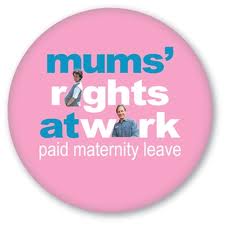The language of leave
Leave is an important part of your rights at work.
There is leave for when you are too ill to go to work, leave for having babies, leave for becoming a dad, leave for looking after family and leave for being a long-serving loyal employee. There are many types of leave and chances are you will use many of them when you are employed.
‘Leave’ means exactly that – you have a right ‘to leave the workplace’ and still keep your job. Some leave is paid, some types of leave are unpaid, and there many rules about when leave can be taken and how much you can take.
When starting any job, it’s important to find out what your leave entitlements are and if there are any rules you need to understand.

The National Employment Standards is a nation-wide set of minimum standards that must apply to all employees (please see the note about casual employment below). These standards include some very important types of leave, including:
Parental leave: This is time off work around the birth of children (and adoption). It includes maternity leave for mothers with some paid leave and usually up to 12 months unpaid leave (in some jobs including teaching, the unpaid leave period can be much longer). There is also leave for fathers around the birth or adoption. It is possible for the father to claim the paid and unpaid leave if he is the primary care giver. As a general rule, the employee must have completed 12 months service with their employer.
The first paid maternity leave was granted to federal public servants in 1973. Later in 1979, one year’s unpaid maternity leave was introduced for all mothers. But it wasn’t until 2011 that 18 weeks paid paternity leave became the national standard.
Annual leave: Also known as holiday pay or recreational leave, employees get four weeks paid leave for every 12 months of service. Shift workers get an extra week lifting their annual leave to five weeks. The employer and the employee both need to agree on when the leave is taken but the rules say that a reasonable request to take leave should not be refused.
Paid sick leave and long-service leave were first introduced in 1951
Personal and carer’s leave: This is also known as sick leave, which is time off because you are unfit for work. In recent years this leave changed to also include time to care for the worker’s immediate family or household if they ill or face an unexpected emergency. For each year of service with an employer, the worker is entitled to 10 days of paid personal/carer’s leave. Days not taken are carried over to future years.
Compassionate leave: Employees are able to take up to two days leave if an immediate family member is seriously ill, in a serious accident or dies.
Community service leave: This is for volunteers in recognised fire fighting and emergency services. It also applies to jury service.
Long service leave: This leave rewards people for staying with the one employer for many years. The rules vary a lot, but generally it is three months paid leave after ten years of continuous service. Sometimes it can be taken in part earlier (after 7 years).
Casual employees
In most cases, the paid leave benefits do not apply to casual employees – but casuals should be paid 25 per cent higher wages to make up for the loss of paid leave. In some cases, casuals with regular employment are entitled to ask for time off in the same way as others.
